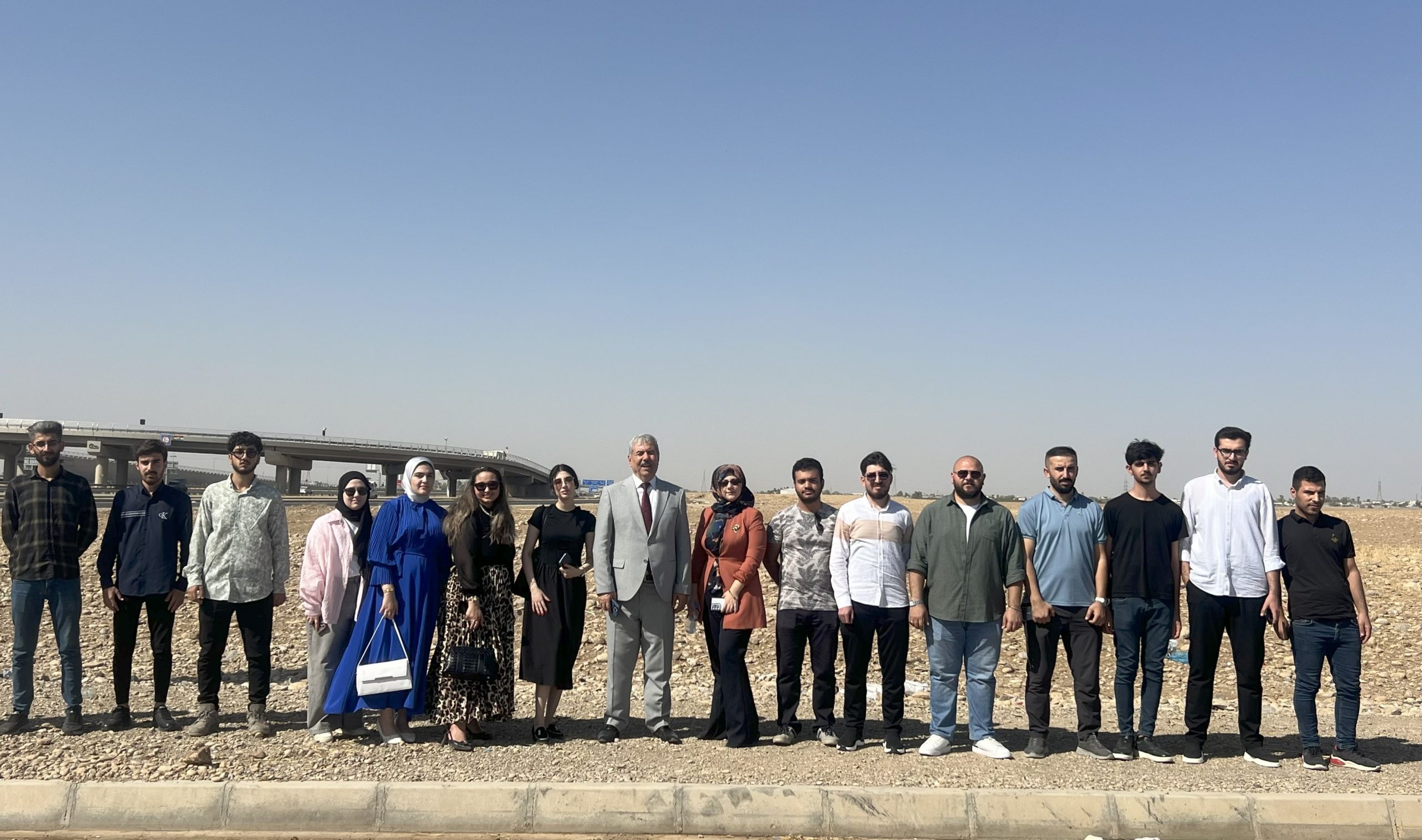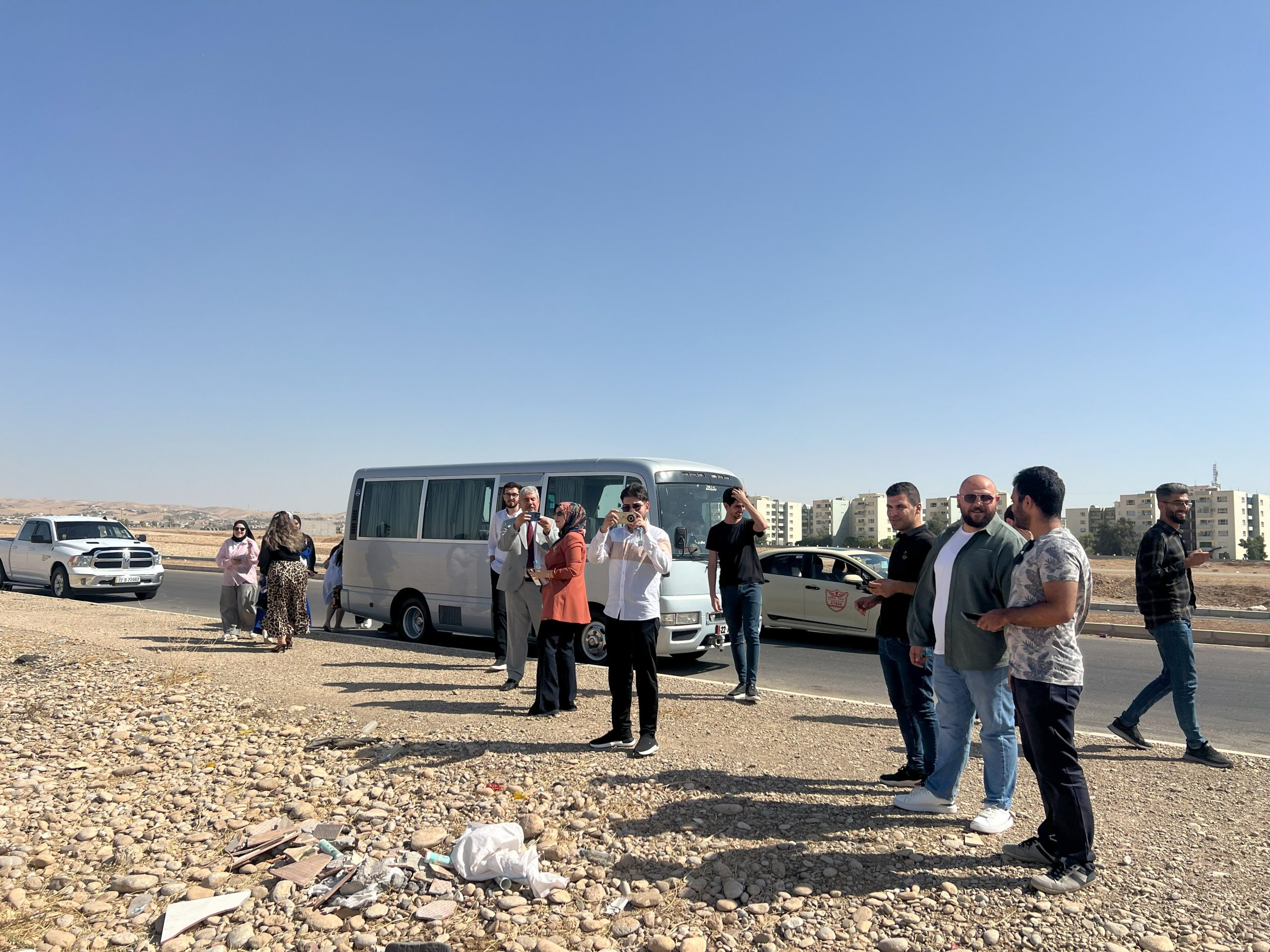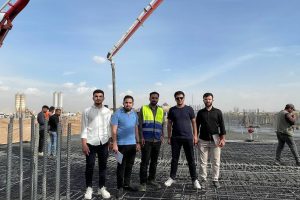Architecture Engineering Students Conducted Scientific Field Visit to Project Site
The Head of the Architecture Engineering Department at Cihan University–Erbil organized a scientific field visit for fifth-year students, supervised by Professor Dr. Rashid Hamid Yaseen, in collaboration with Assistant Lecturer Lana Shahab Ahmed.
During the visit, students surveyed the proposed project site located on the Ring Road near its intersection with Koya Road in Erbil. Professor Yaseen divided the students into four main groups, assigning each group a specific task for research and analysis.
The first group focused on analyzing the topography and natural surface features of the site. They examined geophysical aspects such as elevations, depressions, slopes, and soil characteristics, assessing how these factors influence design decisions and the placement of architectural structures. This analysis is essential for determining suitable foundation types and structural systems.
The second group concentrated on traffic movement and access to the project site. They evaluated vehicular and pedestrian traffic volumes on surrounding streets and identified the main entry and exit points. Their assessment contributes to designing an efficient transportation system, determining parking areas, and creating pedestrian and cycling paths that minimize disruptions to local traffic flow.
The third group analyzed the urban landscape surrounding the project site. They studied the types of nearby buildings and land uses such as residential, commercial, and governmental—along with building heights, architectural styles, and spatial organization. This evaluation helps ensure that the proposed project integrates harmoniously with its surroundings and enhances the urban character of the area.
The fourth group examined environmental factors affecting the project site. They analyzed wind direction, sunlight exposure, temperature, and humidity to determine optimal building orientation for maximizing solar gain and reducing energy consumption. Additionally, they assessed air quality and noise levels, proposing measures to mitigate their negative environmental impacts.
Throughout the field visit, the supervising instructors provided both theoretical and practical guidance to support the students in preparing a detailed and comprehensive site analysis from multiple perspectives.





